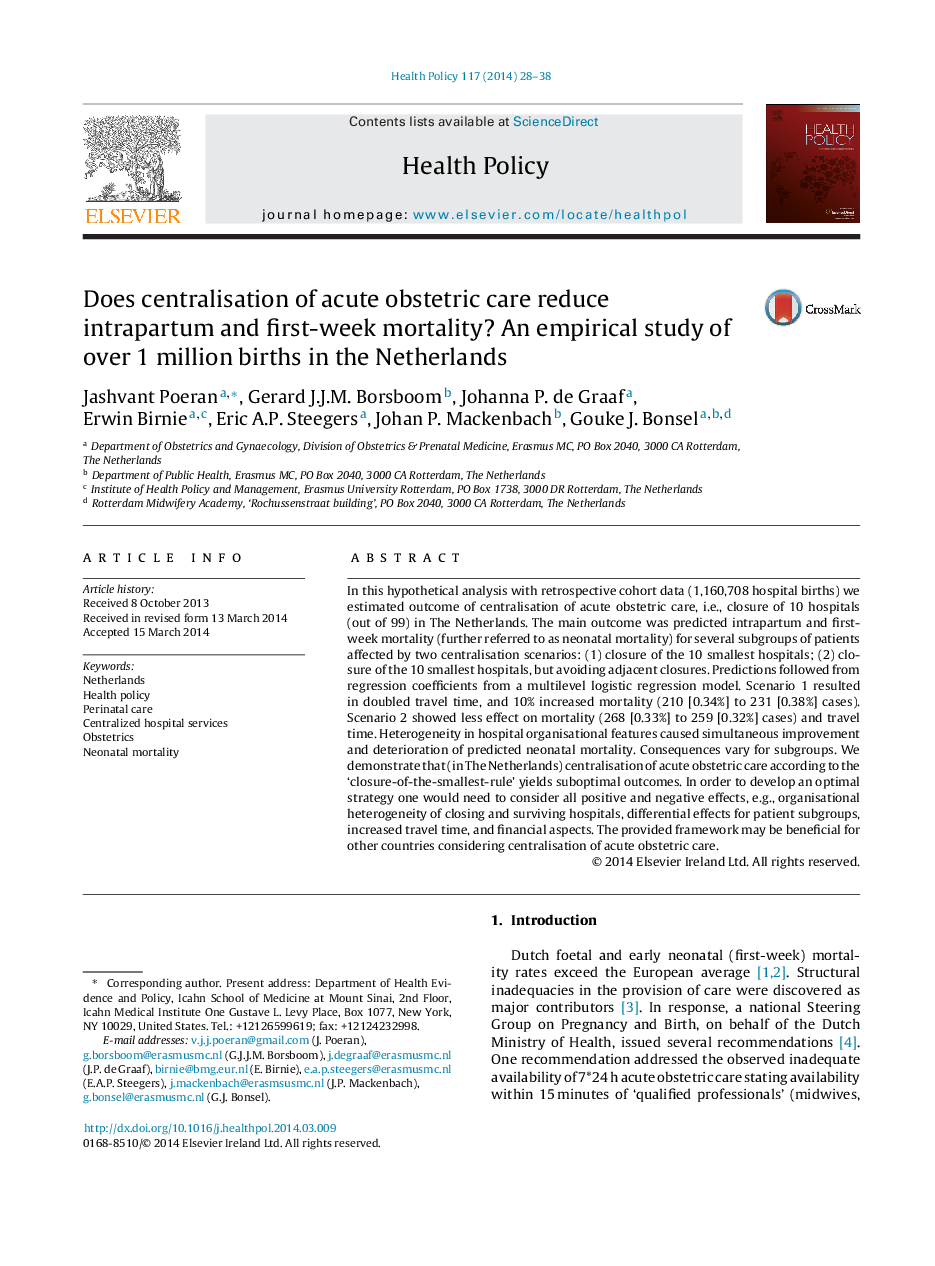| کد مقاله | کد نشریه | سال انتشار | مقاله انگلیسی | نسخه تمام متن |
|---|---|---|---|---|
| 6239694 | 1279006 | 2014 | 11 صفحه PDF | دانلود رایگان |
- We studied two hypothetical centralisation scenarios for acute obstetric care.
- Main outcomes were predicted intrapartum and first-week mortality and travel time.
- The scenarios showed differential effects, overall and by patient subgroup.
- Crucial determinants are hospital organisation and patient subgroup heterogeneity.
- The provided framework may be beneficial for others considering centralisation.
In this hypothetical analysis with retrospective cohort data (1,160,708 hospital births) we estimated outcome of centralisation of acute obstetric care, i.e., closure of 10 hospitals (out of 99) in The Netherlands. The main outcome was predicted intrapartum and first-week mortality (further referred to as neonatal mortality) for several subgroups of patients affected by two centralisation scenarios: (1) closure of the 10 smallest hospitals; (2) closure of the 10 smallest hospitals, but avoiding adjacent closures. Predictions followed from regression coefficients from a multilevel logistic regression model. Scenario 1 resulted in doubled travel time, and 10% increased mortality (210 [0.34%] to 231 [0.38%] cases). Scenario 2 showed less effect on mortality (268 [0.33%] to 259 [0.32%] cases) and travel time. Heterogeneity in hospital organisational features caused simultaneous improvement and deterioration of predicted neonatal mortality. Consequences vary for subgroups. We demonstrate that (in The Netherlands) centralisation of acute obstetric care according to the 'closure-of-the-smallest-rule' yields suboptimal outcomes. In order to develop an optimal strategy one would need to consider all positive and negative effects, e.g., organisational heterogeneity of closing and surviving hospitals, differential effects for patient subgroups, increased travel time, and financial aspects. The provided framework may be beneficial for other countries considering centralisation of acute obstetric care.
Journal: Health Policy - Volume 117, Issue 1, July 2014, Pages 28-38
